Click on Thumbs for larger Image, Mouse over Image for description
__________________________________________________
Lingaraj & Parvati Temples
The product of the accumulated and crystallized experience of several centuries, the Lingaraj temple, built in 617-657 A.D., is the quintessence of Orissan architecture. In the elegance of its proportions and the richness of its surface-treatment, it is one of the most finished and refined manifestation of temple architecture in India
_______________________________________________________________________________________________
Rajarani temple
Picturesquely set the Rajarani temple is a combination of grace and elegance, famous alike for its sculptural embellishments and the unusual formation of its tower. Facng east, the double amlas, crowning some of the anga-sikharas are reminiscent of the Kandariya Mahadeva temple of Khajuraho. Built in the 11th century the specialty of this temple is that it has no presiding deity.
_______________________________________________________________________________________________
Ananta Vasudeva Temple
Built on the east bank of Bindu-sarovara in A.D. 1278 at the instance of Chandradevi, daughter of Anangabhima III, during the reign of the latter's grandson Bhanudeva, the temple is noted for its profusely carved exteriorand finished appearance. Unfortunately, much of the carvings has worn out due to the softness of the stone. This is only important Vaishnava temple standing in Bhubaneswar. The deities installed in the sanctum are Balarama (Ananta), Krishna (Vasudeva), and Subhadra. It has one similarity to Sri Jagannath Temple in Puri. Here the Prasad (Holy Food offered to deities) are sold to the people.
_______________________________________________________________________________________________
Parasuramesvara Temple
This is the best preserved specimen of the early group of Orissan temples assignable to the 7th century A.D. It has a flat roofed rectangular pillared hall (Jagamohana) attached to a "Triratha" Sanctum (Deul) about 12.8 metres high, which carried a squat heavy-shouldered Sikhara. Its carvings are known for their simple charm.
__________________________________________________________________________________________________
Mukteshwar & Siddheshvara Temples
Signaling the end of the first phase and anticipating the second phase, the Mukteswar temple, facing west is an important landmark in the progressive course of the architectural movement in Bhubaneswar.
To the north-west of the Mukteswar temple is the Siddhesvara temple. The temple is a specimen of the khakhara Order, in which the emergence of the typical Orissan form is almost complete
_________________________________________________________________________________________________
Meghesvara Temple
According to an inscription the Meghesvara temple along with the tank near it, came into existence at the instance of Svapnesvara, brother-in-law of the Ganga king Rajaraja (circa A.D.1171-92) during the reign of the latter's brother Anangabhima (circa A.D.1192-95)
________________________________________________________________________________________________
Brahmesvara Temple
According to an inscription originally attached with the temple (now missing), the temple was built to enshrine a linga called Brahmesvara by Kolavati, the mother of Somavamsi king Uddyotakesari, in the latter's eighteenth regnal year at a locality known as Siddhatirtha at Ekamra. Thus the temple provides a datum-line in the chronology of Orissan architecture
____________________________________________________________________________________________
Satrughneswar group of Temples
The three ruined temples, commonly known as Lakshmaneswar, Bharateswar and Satrughneswar, standing in a row opposite and the much later Rameswar temple are generally regarded as the earliest temples, being assigned to the closing of the sixth or beginning of the seventh century A.D.
__________________________________________________________________________________________________
Vaital Deul & Sisireswar
Enclosed in an irregular compound-wall, the Vaital Deul consists of a deul and jagamohana, is striking both in architectural form and applied art. The decorative reliefs are similiar in form to the Parasurameswar temple but probably of a later date.
In the same compound, immediately to the north of the Vaital Deul and contemporaneous with it, is the Sisiresvara temple , now shorn of its crowning members.
____________________________________________________________________________________________
Svarnajalesvara & Kotitirtha temple
The Svarnajalesvara temple, since restored is located near the Kotitirtha tank and temple. It is a replica of the deul of the Parasuramesvara temple , both architecturally and sculpturally
____________________________________________________________________________________________
Uttaresvara temple
The Uttaresvara temple, on the north bank of the Bindu-sarovara tank,
____________________________________________________________________________________________
Kedar Gouri Temple
Dedicated to Siva (who is also called the Kedareswar) and Goddess Gouri, the temple is situated within the same premises next to the Mukteswar Temple. The legend goes that king Lalatendu Kesari, after a tragic episode relating to two lovers Kedar and Gouri, had built this temple in their memory.
____________________________________________________________________________________________
Other Temples
 |  |  |  |  |  |
 |  |  |  |  |  |
 |  |  |  |  |  |













































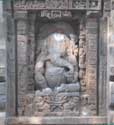































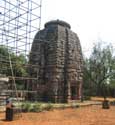










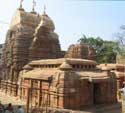




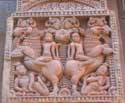

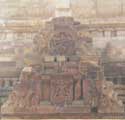









No comments:
Post a Comment